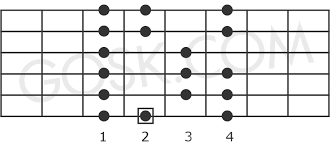This is in consideration of three note per string scales. Also, I’m no virtuoso like a lot of you guys are. My speed and accuracy is in the developing stage. Basically, my attempt with the CTC stuff is to rework my whole right hand technique to accommodate the kind of deft and swift technique I’d like to have.
I am pretty comfortable doing the leading edge picking with downward slanting on ascending runs, kind of dragging the pick along getting to the next string as quickly as possible Even in just a couple weeks of practicing like this my speed and accuracy has increased a good bit, but when I attempt to descend back down things get really choppy and weird.
I’ve tried to force an upward pickslant on the descent to emulate this dragging in reverse, but it feels awkward and doesn’t seem to be helping with speed or fluidity.
I am kind of inclined to drag the rear edge of the pick in a straight (not slanted) manner, but that seems to require a very light touch I will need to develop in order to make it fast and fluid.
Any advice?

